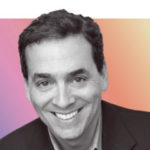As the founder and CEO of 360 Live Media, a marketing and experience design agency, Don Neal has watched decades-old annual meetings struggle to stay relevant in the era of TED Talks and South by Southwest. “These association events are under a lot of pressure,” Neal said, “because commercial events are changing people’s expectations.”
Attendees want and expect more from live events than ever before, Neal said, and as a result, many groups have decided to rebrand their meetings, switching up old formulas and injecting more pop and sizzle. Convene spoke with four associations that have done just that in the last few years, with catchier program names, ramped-up content, and more. For some of them, that’s meant TED-style talks and roundtable sessions; for others, it’s higher-profile speakers, enhanced networking opportunities, and even a rock concert. Some did it to reach new audiences, others to boost attendance. Some worked with outside agencies; others did everything in house.
These associations certainly aren’t the only organizations rethinking their meeting strategies right now. The main thing, according to Neal, is to move “from an event to an experience.” Otherwise, attendees may feel neglected or even duped. Conferences and trade shows “shouldn’t simply be boring education, a famous keynote speaker, a cocktail party, and a golf outing,” Neal said. “Those days are over.”
GLOBAL BOARD LEADERS’ SUMMIT
National Association of Corporate Directors (NACD)
Convincing members of corporate boards of directors to circle extra dates on their already-packed calendars isn’t easy. “Very time-starved” is how Henry Stoever, chief marketing officer for NACD, describes most of the association’s members. On top of that time crunch, most directors assume conferences are “for the management team,” Stoever said, so upping attendance at NACD’s annual Board Leadership Conference was challenging. “We needed to position it in a unique way.”
 NACD started with losing the “conference” stigma. “‘Conference’ wasn’t a word that was relevant to what directors do,” Stoever said. “Directors attend summits.” Last year, the association renamed the event the Global Board Leaders’ Summit — and saw attendance jump from about 500 people to nearly 2,000. While Stoever doesn’t credit all of that to the new name, he says it was the starting point. Today, he said, the meeting is “a whole different product than it used to be.”
NACD started with losing the “conference” stigma. “‘Conference’ wasn’t a word that was relevant to what directors do,” Stoever said. “Directors attend summits.” Last year, the association renamed the event the Global Board Leaders’ Summit — and saw attendance jump from about 500 people to nearly 2,000. While Stoever doesn’t credit all of that to the new name, he says it was the starting point. Today, he said, the meeting is “a whole different product than it used to be.”
With its reworked name in place, NACD focused on developing new programming that would catch the interest of corporate directors and justify their commitment to four days of sessions. The Global Board Leaders’ Summit debuted at the Marriott Marquis Washington, DC on Sept. 26–29, 2015, and included a slew of what the summit website calls “Unique Experiences,” such as 75-minute “Ask the Experts” sessions and Convergence Labs, featuring three short keynote talks that each offer a different take on the same topic. Innovation Nation sessions spotlighted emerging business trends, including a company that makes plastic out of mushrooms.
NACD is constantly tinkering with its programming, adding and subtracting features, not unlike a company that’s developing a new product, according to Stoever. For example, at this year’s summit — scheduled for the Marriott Marquis Washington, DC on Sept. 17–20 — a new Think Tank series will explore topics such as the power of introverts and innovation lessons from the Underground Railroad. “You don’t launch a product and never change it,” Stoever said. “You launch a product and you learn, you evolve; you learn, you evolve; you learn, you evolve.”
It seems this particular product is one that people want. On top of the 300-percent increase in attendance, revenue per person is up about 50 percent, and the repeat rate for people who attended in the previous one to two years is now well over 50 percent — up from the 20s a few years ago. The number of first-time attendees has also gone up, plus more people are joining NACD specifically so they can check out the summit. (Membership in NACD is required to attend.) Stoever has also noticed that 35 to 40 companies are now sending multiple board members to the summit, whereas only three years ago, that number was in the single digits.
NACD’s main goal is for corporate directors to leave the summit with new ideas — things they didn’t know that they didn’t know. And so far, Stoever noted, that’s exactly what he’s been hearing from attendees. “[People are saying,] ‘Wow, I had no idea that I didn’t know anything about that,’” Stoever said. “‘I now know a little bit about what I need to learn more about.’”
XPONENTIAL
Association for Unmanned Vehicle Systems International (AUVSI)
When your industry is in the midst of a serious transition, it only makes sense for your conference to change, too. AUVSI found itself in exactly that situation last year: The drone industry was evolving much faster than its annual Unmanned Systems conference supporting it.
While unmanned vehicles traditionally have supported military and government activities, they’re now attracting attention in every other sector, too — from real-estate agents filming 360-degree aerial tours, to Amazon shipping out products, to hobbyists buzzing their friends and neighbors. “We wanted to refresh at a minimum,” said Brian Wynne, president and CEO of AUVSI, “and to the greatest extent possible, pick a brand that reflected this new trajectory.”
AUVSI called in Don Neal and 360 Live Media to help design a new event, starting with a new name. With Neal’s help, Unmanned Systems became XPONENTIAL. “Drones allow you to transcend gravity, to go underwater, to have cars without drivers,” Neal said. “The inspiration for XPONENTIAL was really born out of that idea of expanding human potential. That’s the word mashup: Expand human potential. XPONENTIAL.”
 But the changes didn’t stop there. AUVSI wanted to attract new attendees — people who were more likely to hang around Coachella or Bonnaroo than they were a traditional trade show, Neal said — yet also retain its original audience. For XPONENTIAL, which debuted at the New Orleans Ernest N. Morial Convention Center this past May 2–5, AUVSI rolled out lively new programming, including a Startup Showdown that had three companies competing for a $15,000 prize. It also added more networking and community-building activities, and a Women in Robotics Forum.
But the changes didn’t stop there. AUVSI wanted to attract new attendees — people who were more likely to hang around Coachella or Bonnaroo than they were a traditional trade show, Neal said — yet also retain its original audience. For XPONENTIAL, which debuted at the New Orleans Ernest N. Morial Convention Center this past May 2–5, AUVSI rolled out lively new programming, including a Startup Showdown that had three companies competing for a $15,000 prize. It also added more networking and community-building activities, and a Women in Robotics Forum.
360 Live Media helped AUVSI develop a series of “journey maps” that suggested paths through the conference for various attendees: first-timers, R&D people, academics, those focused on defense, air, or ground, and so on. Neal says those guides take some of the stress out of conference-going, and also help different cohorts find each other, because you’re much more likely to talk to someone who keeps turning up at the same sessions you’re in.
General-session speakers included Gur Kimchi, vice president of Amazon Prime Air; John T. Chambers, executive chairman of Cisco Systems; and David G. Perkins, commanding general of U.S. Army Training and Doctrine Command. Those speakers were intended to reflect the growing and diverse audience for unmanned vehicle systems — “about 14 different sectors of the economy,” Neal said, listing off architecture, engineering, city government, agriculture, and oil and gas. 360 Live Media also helped create a series of marketing campaigns to draw each of those groups to XPONENTIAL by emphasizing having all drone applications under one roof, “like a giant shopping mall” where people from the oil and gas industry could learn from architects, for example, and someone interested in driverless cars could discover the technology’s water and air applications.
If you just slap a new name on the old product, you might get somebody there once, but they’re not going to come back again. We created a very deliberate way for people to meet exactly the kinds of people they were looking for.
XPONENTIAL drew more than 8,000 attendees from more than 55 countries, and they were quite a cross-section, according to Wynne: two-star generals in uniform standing beside Silicon Valley types in jeans. “There are a lot of different folks coming together, and our brand embraces that,” Wynne said. “It’s by design that we’re reaching out and inviting all of those people into the pen.” He sees the rebrand as “a fresh promise” — a commitment to innovation, to newness, and to a fun experience.
“It’s just exciting,” Neal said, “to see an organization that’s been around for this long have the courage and the wisdom to position themselves for the future.”
HCEACONNECT
Healthcare Convention & Exhibitors Association (HCEA)
Some called it a meeting. To others it was a conference. Then there was the “convention” contingent.
Not unlike a double-agent spy, HCEA’s Annual Meeting had picked up so many aliases over the years that its real identity was getting tough to pinpoint — even for the people who organized it. “Kind of all over the place” is how Amy Lotz, CAE, HCEA’s executive director, describes the event’s ever-shifting monikers. “We didn’t have a particularly strong identity around the name.”
 But according to Lotz, choosing a single, unifying title was only one reason that HCEA decided to rebrand its Annual Meeting this year. “We wanted it to indicate that we’re changing, we’re reimagining, we’re recommitting to HCEA,” she said. “We are reimagining all of HCEA, looking at it from all different angles.”
But according to Lotz, choosing a single, unifying title was only one reason that HCEA decided to rebrand its Annual Meeting this year. “We wanted it to indicate that we’re changing, we’re reimagining, we’re recommitting to HCEA,” she said. “We are reimagining all of HCEA, looking at it from all different angles.”
There had been staffing changes — HCEA retained a new management company, MCI USA, in November, which is when Lotz came on board as executive director. A new website and a refreshed newsletter followed. “But we had to focus on what we’re known for at the top,” Lotz said, “which is the annual meeting.”
As HCEA set out to rebrand the event in-house earlier this year, the word “connect” kept surfacing — from attendees, from board members, from sponsors, from exhibitors. So they renamed the meeting HCEAConnect. The new program will debut next month in Savannah, Georgia.
HCEAConnect is more than cosmetic. Its content has been refreshed, too. Lotz turned to past conference surveys for ideas, and also talked to some 20 HCEA members, asking what they wanted to see change. “HCEA had a pattern of being a little more typical of conferences,” she said. Most sessions involved keynote speakers or panel discussions. The people Lotz heard from wanted more interactive presentations — and more opportunities to connect with each other.
We wanted [the new annual meeting name] to indicate that we’re changing, we’re recommitting to HCEA. We are reimagining all of HCEA. But we had to focus on what we are known for at the top, which is the annual meeting.
As a result, HCEAConnect will offer more roundtables, short TED-style talks, and plenty of chances to socialize. In “Walking With Wisdom,” attendees can meet up early (7:45 a.m.) to wander along the Savannah River together and chat. There will also be curated tours of the exhibit hall to help newbies get a handle on key sponsors and maximize their time at the event.
But not everything is different from past years. In talking with members, Lotz was careful to note which activities they enjoyed and wanted to keep. The annual CSR activity was on that list, and this year will bring volunteers to a local children’s center, where they’ll spiff things up with fresh paint and new toys. HCEA’s annual State of the Industry report will also stay intact, but with an interactive boost. This year, attendees will break into small groups to swap thoughts and compare reactions to the information presented.
The results of HCEA’s revamped meeting are still to come, but Lotz has high expectations, starting with exceeding its average attendance of 400 to 500 people. “Our hope is to bring in a lot of new people to HCEA and this event,” she said. “We anticipate a lot of first-time attendees this year. We’re really excited about this.”
&THEN
Direct Marketing Association (DMA)
Marketing is about what’s next — the next trend, the next idea, the next big thing. That’s why, when 360 Live Media set out to help rebrand the annual DMA Conference last year, they started by renaming it &THEN. “It’s intended to be provocative, disruptive, and frankly, to open the conversation,” 360 Live Media’s Don Neal said. “It allows us on one hand to be playful and thoughtful, and on the other to be very specific that marketing is about what’s next.”
But a new name was only the start. “If you just slap a new name on the old product,” Neal said, “you might get somebody there once, but they’re not going to come back again.” Instead, you have to change the whole experience — and make sure it lives up to the new brand you’ve developed. For DMA, that meant transforming a traditional, six-day conference that was stuffed with educational sessions into a glitzy, interactive, three-day extravaganza.
To illustrate the shift that began with &THEN15, which was held at the Boston Convention and Exhibition Center on Oct. 4–6, Lindsay Hutter, DMA’s senior vice president of communications and public relations, offers this: In 2014, the DMA Conference featured a banquet with a comedian. In 2015, &THEN had a rock concert with the Goo Goo Dolls.
From the moment attendees stepped into the registration lobby at &THEN, things were different. DMA used live music, scents, and lighting to create a warm “regi-ception” area that felt more like walking into a boutique hotel than a meeting. &THEN also offered rest areas where people could get comfortable during conference breaks, sinking into a couch or lounging on a beanbag chair while charging their phones and laptops. To fight the chronic fatigue and unflattering salt bloat that often accompany conference-going, DMA started sessions later in the morning and served high-protein meals.
Content changed dramatically, too. Roundtable discussions and themed workshops made sessions more interactive. Keynote speakers included Grammy Award–winning singer/songwriter John Legend and TOMS Shoes founder Blake Mycoskie. DMA also kicked up its networking events, hosting breakfasts for various attendee segments (the data community, the integrated marketing community, the analytics community) and lunches for still more-specific groups (such as international marketers and women in marketing). “We created a very deliberate way for people to meet exactly the kinds of people they were looking for,” Neal said.
The exhibit hall became The Hub, an area that Paul McDonnough, DMA’s vice president of events and programming, describes as “the essence of our reinvention.” DMA built a stage in the middle of The Hub where presenters delivered short, TED-style talks that weren’t strictly focused on marketing. “We call these Impact Sessions,” McDonnough said, “because the high-energy atmosphere and nature of the open-mic/open-stage environment is very high-impact and high-intimacy…. It brought a lot of renewed energy into the hall. You were coming to immerse yourself in content.”
As a result of all the changes and a fresh marketing strategy, McDonnough said, &THEN15 brought in a different audience than the DMA Conference. According to Hutter, about half of the 5,206 attendees were first-timers — a significant increase. Roughly 25 percent worked at or above the vice-president level, while 20 percent had less than five years’ experience. That mix of age and experience levels was “exactly what we wanted,” McDonnough said. “We wanted to expand our reach.”
Ask Yourself This
Are you wondering if you should rebrand your annual meeting? Here are some questions to ask, based on conversations with HCEA’s Amy Lotz, NACD’s Henry Stoever, and 360 Live Media’s Don Neal.
› Are our leaders excited about this change? Will they be on board with it?
› Does the event already have a strong brand and identity? If so, what’s the purpose of making a change?
› What are the business objectives of this event? Are we accomplishing them?
› What do other events look like? How is our event similar to the others out there? What opportunities are there to make it unique in our marketplace?
› Is what we’re doing and saying relevant to our audience of today and tomorrow?
› Is the attendance at our event growing by at least 15 percent every year?
› Do we have at least 10 percent of our total industry attending our event?
› Is our event being covered by the media? If so, how many people are coming from the press? From the trades? Are we getting any general media coverage?
Test Time
Earn one hour of CEU credit. Once you’ve finished reading this article, read the following material:
› The Hinge Rebranding Kit, a comprehensive guide for professional-services firms developed by Reston, Virginia–based Hinge marketing agency, available for free download.
To earn CEU credit, visit pcma.org/convene-cmp-
The Certified Meeting Professional (CMP) is a registered trademark of the Convention Industry Council.






